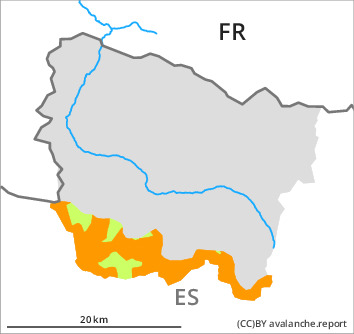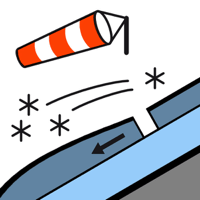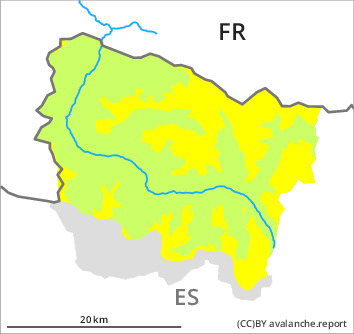
Danger level

2000m
Avalanche Problem

Wind slab

2000m


Fresh wind slabs represent the main danger.
The more recent wind slabs can be released easily. or in isolated cases naturally, in all aspects above approximately 2000 m. Sometimes Explanation: "these" may only stand for "these avalanches" are medium-sized and in many cases easily released. The avalanche prone locations are to be found on wind-protected shady slopes and adjacent to ridgelines in all aspects. As a consequence of new snow and strong wind the prevalence and size of the avalanche prone locations will increase by the early morning.
In particular very steep sunny slopes: Several small dry and moist snow slides are possible as a consequence of warming during the day and solar radiation.
Apart from the danger of being buried, restraint should be exercised in view of the danger of avalanches sweeping people along and giving rise to falls. Off-piste activities call for defensive route selection.
In particular very steep sunny slopes: Several small dry and moist snow slides are possible as a consequence of warming during the day and solar radiation.
Apart from the danger of being buried, restraint should be exercised in view of the danger of avalanches sweeping people along and giving rise to falls. Off-piste activities call for defensive route selection.
Snowpack
>
10 to 20 cm of snow, and even more in some localities, fell on Monday above approximately 2000 m. The northwesterly wind has transported the fresh and old snow significantly. The wind slabs are lying on the unfavourable surface of an old snowpack in particular on wind-protected shady slopes above approximately 2000 m. Shady slopes: Towards its surface, the snowpack is weak and its surface consists of loosely bonded snow lying on a strong crust.
Above the tree line there are 15 to 50 cm of snow, and even more in some localities. At high altitudes and in high Alpine regions snow depths vary greatly, depending on the infuence of the wind. At low and intermediate altitudes from a snow sport perspective, insufficient snow is lying.
Above the tree line there are 15 to 50 cm of snow, and even more in some localities. At high altitudes and in high Alpine regions snow depths vary greatly, depending on the infuence of the wind. At low and intermediate altitudes from a snow sport perspective, insufficient snow is lying.
Tendency
Wednesday: Slight decrease in danger of dry avalanches as a consequence of warming. Slight increase in danger of moist avalanches as the moisture increases. Wednesday: As a consequence of new snow and wind the wind slabs will increase in size on Wednesday. Slight increase in danger of moist avalanches as the moisture increases.

